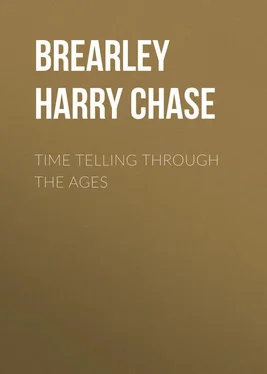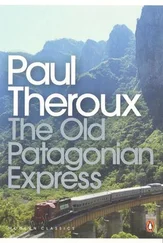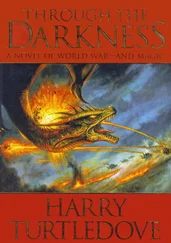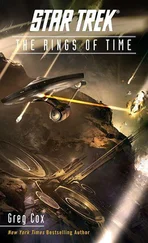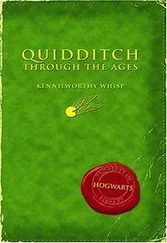Harry Brearley - Time Telling through the Ages
Здесь есть возможность читать онлайн «Harry Brearley - Time Telling through the Ages» — ознакомительный отрывок электронной книги совершенно бесплатно, а после прочтения отрывка купить полную версию. В некоторых случаях можно слушать аудио, скачать через торрент в формате fb2 и присутствует краткое содержание. Жанр: foreign_antique, foreign_prose, на английском языке. Описание произведения, (предисловие) а так же отзывы посетителей доступны на портале библиотеки ЛибКат.
- Название:Time Telling through the Ages
- Автор:
- Жанр:
- Год:неизвестен
- ISBN:нет данных
- Рейтинг книги:4 / 5. Голосов: 1
-
Избранное:Добавить в избранное
- Отзывы:
-
Ваша оценка:
- 80
- 1
- 2
- 3
- 4
- 5
Time Telling through the Ages: краткое содержание, описание и аннотация
Предлагаем к чтению аннотацию, описание, краткое содержание или предисловие (зависит от того, что написал сам автор книги «Time Telling through the Ages»). Если вы не нашли необходимую информацию о книге — напишите в комментариях, мы постараемся отыскать её.
Time Telling through the Ages — читать онлайн ознакомительный отрывок
Ниже представлен текст книги, разбитый по страницам. Система сохранения места последней прочитанной страницы, позволяет с удобством читать онлайн бесплатно книгу «Time Telling through the Ages», без необходимости каждый раз заново искать на чём Вы остановились. Поставьте закладку, и сможете в любой момент перейти на страницу, на которой закончили чтение.
Интервал:
Закладка:
When in the eighteenth century clocks and watches began to come into wide-spread use sun-dials fell into neglect, except as an appropriate bit of ornament in gardens. At Castletown, in the Isle of Man, is a remarkable sun-dial with thirteen faces, dating from 1720.
It was usual to place on sun-dials appropriate mottoes expressing a sentiment exciting inspiration or giving a warning to better living. A dial that used to be at Paul's Cross, London, bore an inscription in Latin, which translated means, "I count none but the sunny hours." In an old sweet-scented garden in Sussex was a sun-dial with a plate bearing four mottoes, each for its own season: "After darkness, light;" "Alas, how swift;" "I wait whilst I move;" "So passes life." Sometimes short familiar proverbs were used like: "All things do wax and wane;" "The longest day must end;" "Make hay while the sun shines."
It is told of Lord Bacon, that, without intending to do so, he furnished the motto borne by a dial that stood in the old Temple Gardens in London. A young student was sent to him for a suggestion for the motto of the dial, then being built. His lordship was busy at work in his rooms when the messenger humbly and respectfully made his request. There was no answer. A second request met with equally oppressive silence and seeming ignorance of even the existence of the speaker. At last, when the petitioner ventured a third attack on the attention of the venerable chancellor, Bacon looked up and said sharply: " Sirrah, be gone about your business ." "A thousand thanks, my lord," was the unexpected reply, "The very thing for the dial! Nothing could be better."
We see that the principle of the sun-dial has been recognized and utilized for many centuries; indeed, we still find sun-dials placed in gardens and parks although we rarely take the trouble to look to them for the time. Like the dinosaur and the saber-toothed tiger, they have had their day. They have been forced to give way to devices that overcame some of their objections; therefore we must not linger too long upon what is, after all, a closed chapter in the history of time-recording.
CHAPTER FOUR
Telling Time by the Water-Thief
Now we must take another backward step of thousands of years. In considering the subject of time-recording, it seems necessary to wear a pair of mental seven-league boots, for we must often pass back and forth over great periods at single strides. While men were still improving the sun-dial, its disadvantages were already recognized and search was being made for some other means of telling time.
Suppose, for example, that one had only a sun-dial about the house; how would one be able to tell time after sunset or on a dark day? How would one know the hour if he were surrounded by tall buildings or a thick growth of trees? And it might be very necessary to tell time under any of these conditions.
Then, again, merely as a question of accuracy, the sun-dial was not always reliable. It would get badly out of the way if used by travelers, since different markings were needed for different latitudes. While on shipboard the motion of the waves would cause the shadow to swing around in the most bewildering manner. Even under ideal conditions it was never absolutely exact, because the apparent motion of our steady-gaited old sun is not quite as dependable as most of us imagine.
Astronomers find that they must allow for what they call "equation of time" in order to make their calculations come out true. The question need not be discussed at this point, but it can be seen that, as humanity left its earliest care-free days and began to get busy, and hurried and anxious over its affairs, it came to feel that after all the sun-dial was not altogether sufficient for its needs.
For this reason we are now taking a third big backward step, returning, this time, not to the caveman but to ancient Babylon and Egypt, probably not less than twenty-seven hundred years ago and possibly much longer. In this way we meet the clepsydra .
The clepsydra was an interesting instrument, and it had an interesting name, which meant the "thief of water" and came from two Greek words meaning "thief" and "water"; you can trace this in our words "kleptomaniac" and "hydrant." We shall now examine a timepiece that was much more nearly a machine than was the simple shade-casting sun-dial.
The original idea was simple enough. At first, it was merely that of a vessel of water, having a small hole in the bottom, so that the liquid dripped out drop by drop. As the level within the jar was lowered, it showed the time upon a scale. Thus, if the hole were so small and the vessel were so large that it would require twenty-four hours for the water to drip away at an absolutely steady rate, it may be seen that the side of the vessel might easily have been marked with twenty-four divisions to indicate the hours. It may also be seen that the water would drip as rapidly at night or in shadow as in sunlight. And the clepsydra could be used indoors, which the sun-dial could not, although it required attention in that it must be regularly refilled and the orifice must always be kept completely open, because the slightest stoppage would retard the rate of dripping and the "clock" would run slow.
The sun, which, with the other heavenly bodies, had therefore been the sole reliance of the human race in its time-reckoning could now be ignored and the would-be timekeeper called to his aid another mighty servant from the forces of nature – that of gravitation.
The most interesting human fact, however, about the clepsydra is that it involved an entirely different conception of the marking of time. Now it was not so much a question of when as of how long . A good sun-dial set in a proper position would always indicate three o'clock when it was three o'clock, but the clepsydra might do no such thing. It would merely show how many hours had elapsed since last it was filled, and the steady drip, drip, drip of the escaping water could – and did – lower the surface quite as evenly at one time of day as at another.
We have already seen that the first purpose in marking time was merely for making appointments, but the clepsydra shows that, with its invention, mankind had already made some progress toward a new point of view. One important factor in this change was the very practical need of telling time at night, in stormy weather, or indoors, where the sun-dial could not be used. The clepsydra, on the other hand, worked equally well at any hour or place, and in all sorts of weather.
Nevertheless, it, too, proved to have certain faults. After a time, people noticed the interesting fact that water ran faster from a full vessel than from one which was nearly empty; this was, of course, because of the greater pressure. Since such a variation interfered with calculations, they hit upon the idea of a double vessel; the larger one below containing a float which rose as the vessel filled, thus marking the hours upon the scale, and the smaller one above, the one from which the water dripped, being kept constantly filled to the point of overflow.
This improved form of clepsydra opened a field of fascinating possibilities in time-recording — it gave the chance to make use of a machine . There is, perhaps, no more interesting point in studying human development than to see the steady, inevitable way in which mankind from its cave-dwelling days has tended toward machinery. Roughly, this progress may be characterized as of three stages.
First. Primitive man – an upright-standing animal, naked, unarmed, weak as compared with some creatures, slow as compared with others, clumsy as compared with still others – a creature with many physical disadvantages, but with the best brain in the animal kingdom.
Читать дальшеИнтервал:
Закладка:
Похожие книги на «Time Telling through the Ages»
Представляем Вашему вниманию похожие книги на «Time Telling through the Ages» списком для выбора. Мы отобрали схожую по названию и смыслу литературу в надежде предоставить читателям больше вариантов отыскать новые, интересные, ещё непрочитанные произведения.
Обсуждение, отзывы о книге «Time Telling through the Ages» и просто собственные мнения читателей. Оставьте ваши комментарии, напишите, что Вы думаете о произведении, его смысле или главных героях. Укажите что конкретно понравилось, а что нет, и почему Вы так считаете.
